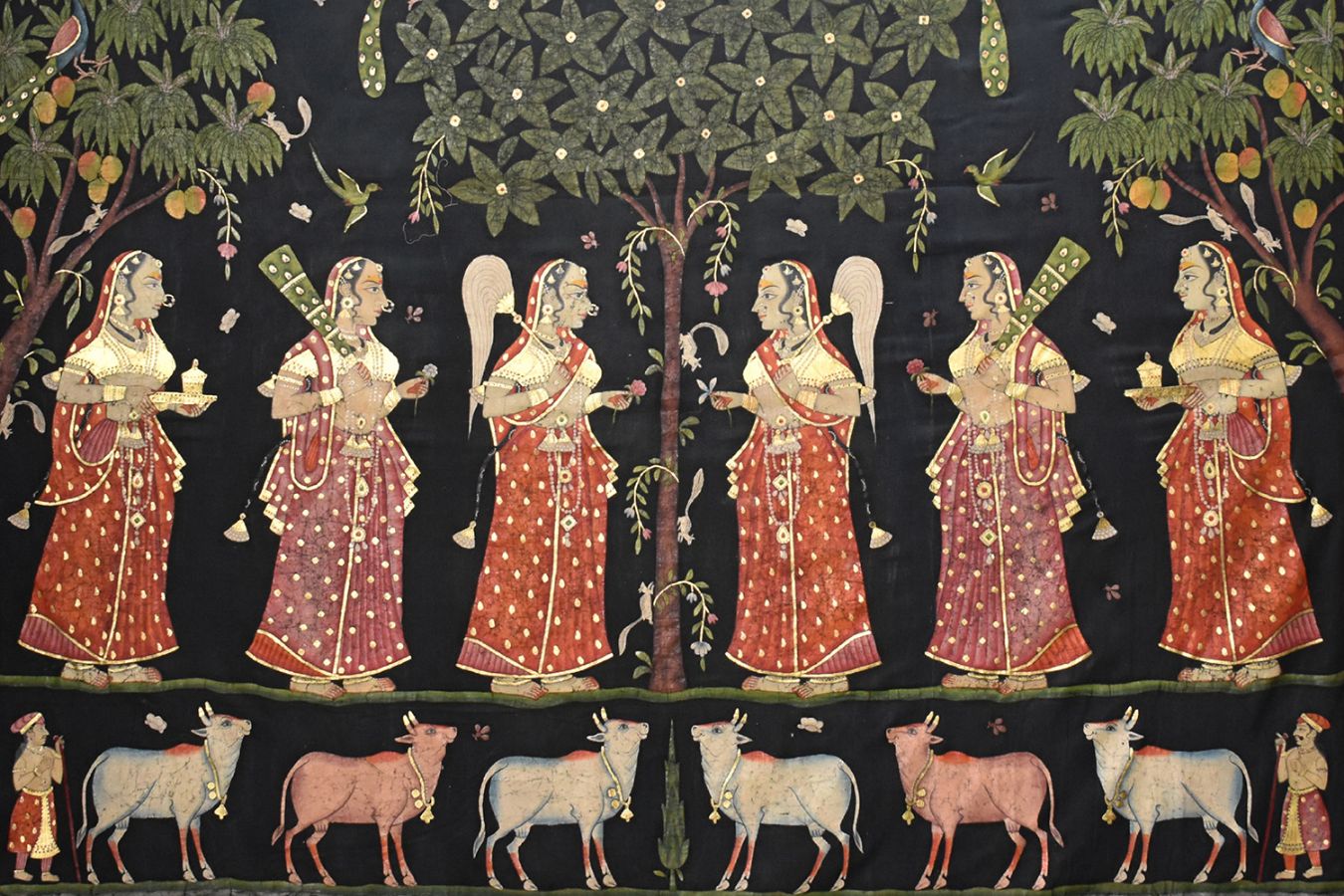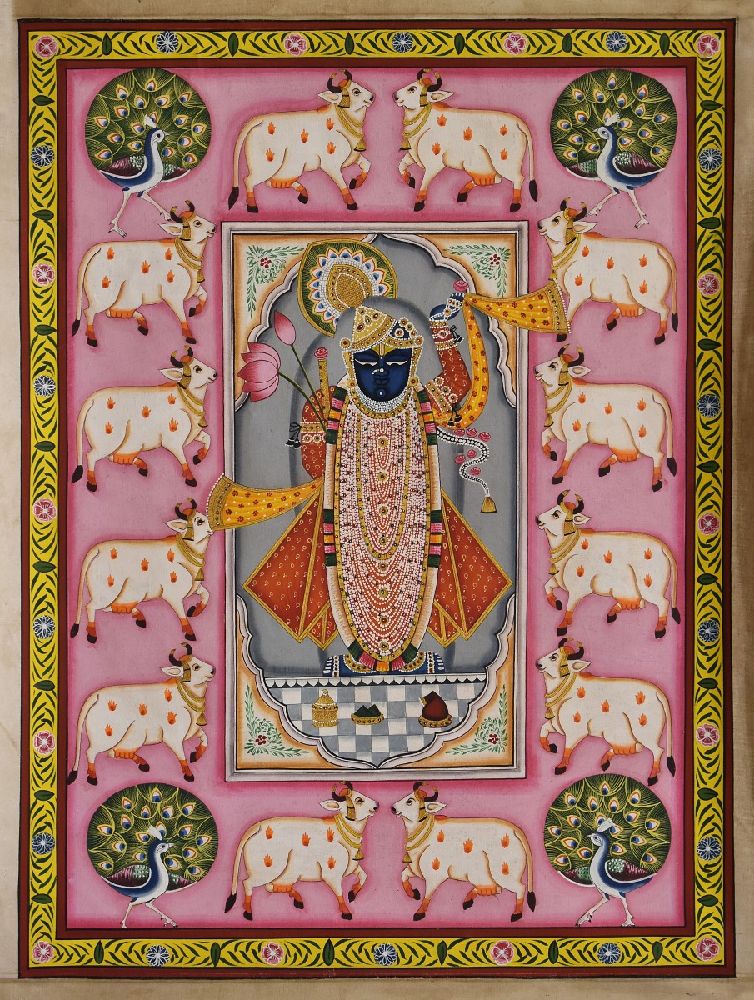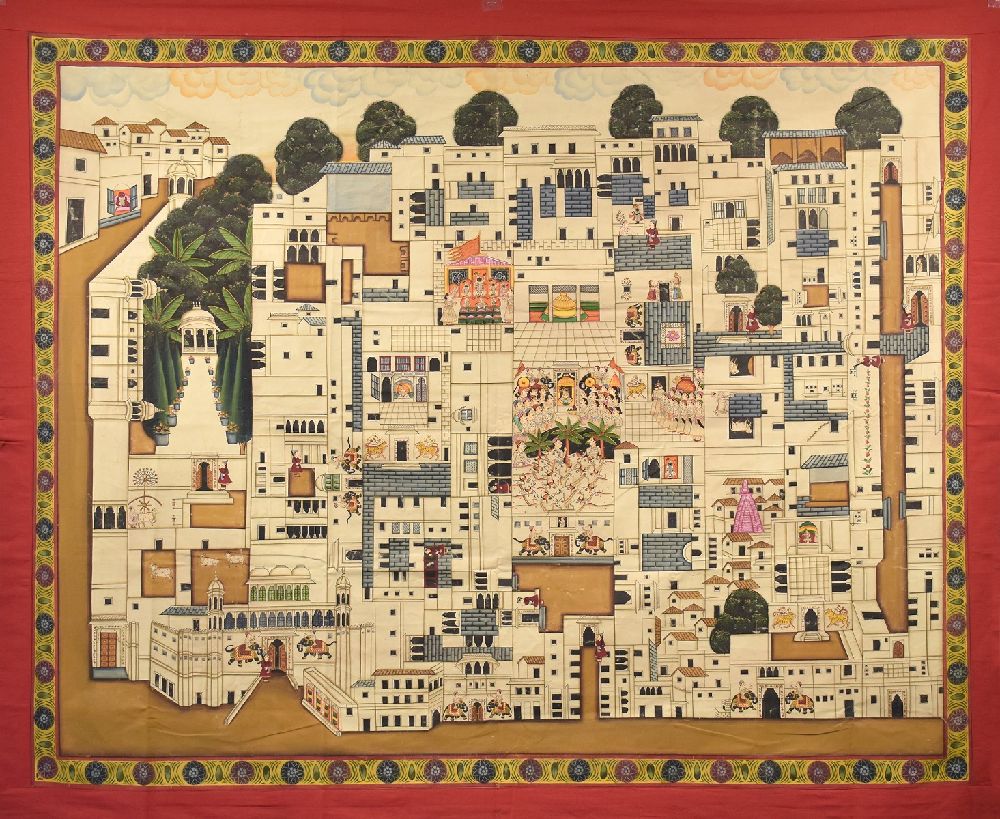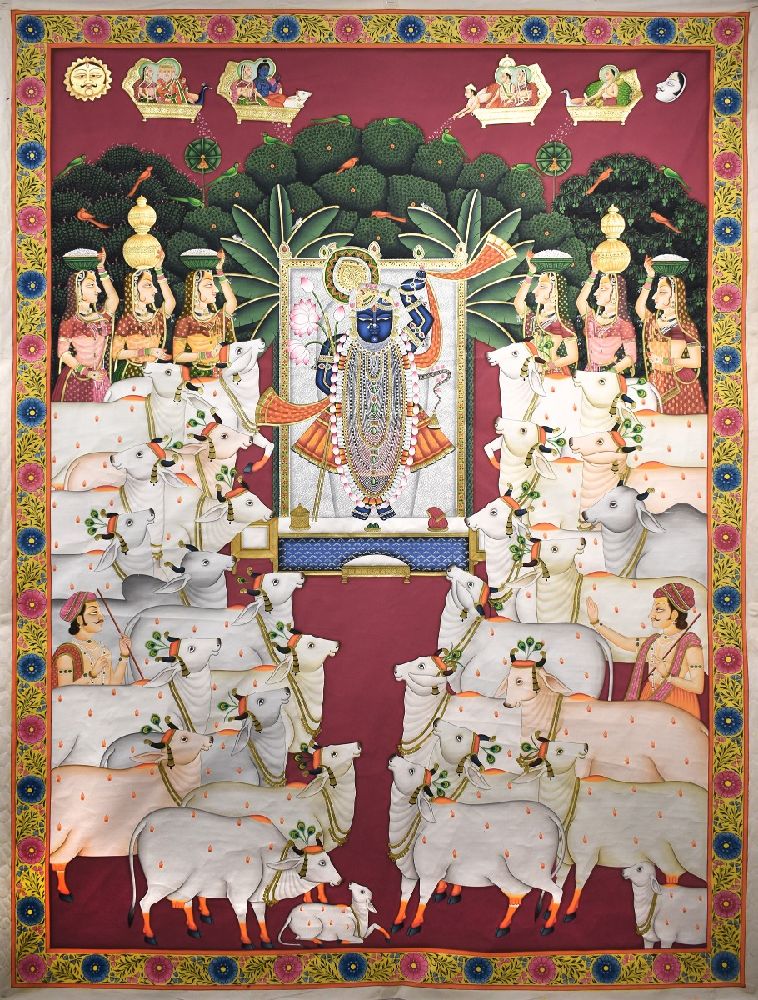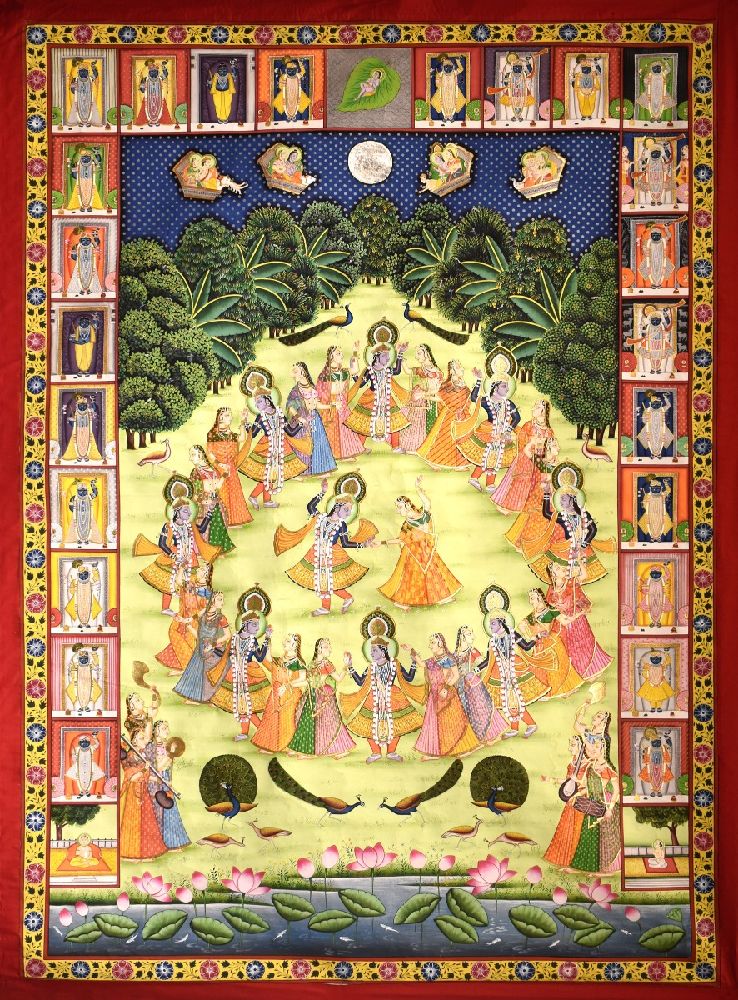Nathdwara painting refers to a tradition and school of artists that emerged in Nathdwara over 400 years ago, a town in Rajsamand district in the Western state of Rajasthan in India. Nathdwara paintings are of different sub-styles of which Pichwai paintings are the most popular. The word Pichwai derives from the Sanskrit words ‘pich’ meaning back and ‘wais’ meaning hanging. This is the cloth hung behind the image of the Hindu god Shrinathji.
Modern Nathdwara Pichwai
The tradition of painting the Pichwais had begun as an offering during auspicious occasions and festivals (mainly during monsoon). Soon the devotees who travelled from afar yearned to take the essence of the idol back home, and so the artisans started to paint the idol in the centre of the Pichwai making it a complete work of art.
Prakatya
It is said that, amidst the bluish rocks of Mount Govardhan in 1409 CE, the uplifted arm of Shrinathji appeared, recognised as the raised arm of Shri Krishna which held up a mountain which gave villagers shelter when Indra punished them with rainstorm. In 1478, on the day that Vallabhacharya was born, Shrinathji’s face emerged in Govardhan. After which Saddu Pande’s cow, Dhumar, began slipping away from the herd to secretly offer her milk to Shri Krishna.
Pichwai depicting the story of Prakatya
In 1492 CE when Vallabhacharya was on a pilgrimage with his disciples in Jharkhand, Shrinathji appeared in his dream asking him to visit Govardhan. Vallabhacharya and his followers arrived Saddu Pande’s home in Govardhan. Next day whilst assisting Pande supervising his herd, Vallabhacharya noticed Dhumar detouring and decided to follow it. To his surprise Vallabhacharya witnessed the cow offering its milk to Shri Krishna. As Vallabhacharya approached the half buried idol, Shrinathji emerged and rushed to embrace Vallabhacharya like a long lost play mate.
This tale like many others of Shri Krishna, are documented and retold in various forms, including paintings of Nathdwara.
Nathdwara school of paintings
Nathdwara, simply means ‘Nath’ God, ‘Dwara’ Gate, the gates of heaven. The Nathdwara school of painting is a sub-style of Mewar painting, including Udaigarh, Devgarh. The temple of Shrinathji is believed to have provided a boost to the art activities in the town of Nathdwara.
Temple Map of Nathdwara
It is recorded that to avoid the oppression of the iconoclast Mugal emperor Aurangzeb, the image of Shrinathji, a child manifestation of Krishna was installed in Nathdwara in 1670 by Goswami priests from Mathura. After this, many artists, including the famous Acharya Gopinathji, motivated by religious fervour came and created paintings of Shrinathji.
The paintings of Nathdwara are well balanced and use deep colours like blue extensively. The image of Krishna lifting Mount Govardhan is one of the most significant images of Nathdwara art. In this school, depictions of human figures usually follow a set pattern, the women are elderly, the men robust and heavily built; and Krishna's playmates are sportive and emotional. The white cows depicted in these paintings have their horns, legs and shoulder hump dyed with henna. These fair, doe eyed cows are a hallmark Nathdwara paintings. The Pushtimarg (path of grace) paintings became extremely popular in the 19th and 20th centuries, making Nathdwara paintings a continuing living tradition.
Gopashtami
(Shrinathji with doe eyed cows and Gopis)
For paintings of Nathdwara, the artists’ major sources of inspiration are the padas comprised by poets and devotees which describe Krishna Leela. Simple composition and a charming naiveté. Another source of inspiration for the artists was the Rasa Leela. Images such as Shrinathji at Nathdwara, which are stone reliefs with a rectangular background, clearly require slightly different treatment from that of three dimensional images.
Krishna Raas Leela with Shrinathji Swaroops
Pichwais are often a group effort, as several skilled painters of the similar cast work together under the supervision of a master artist. Nathdwara school of painting, an amalgamation of almost all the schools of Rajasthan and has emerged with a style and character of its own. The art itself has transformed throughout the decades. The Pichwais today are produced with various techniques as they are painted, printed, woven, appliquéd, studded with mirrors and embroidered with pearls or semi precious stones.

